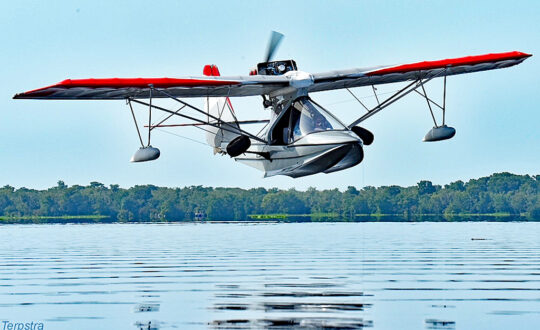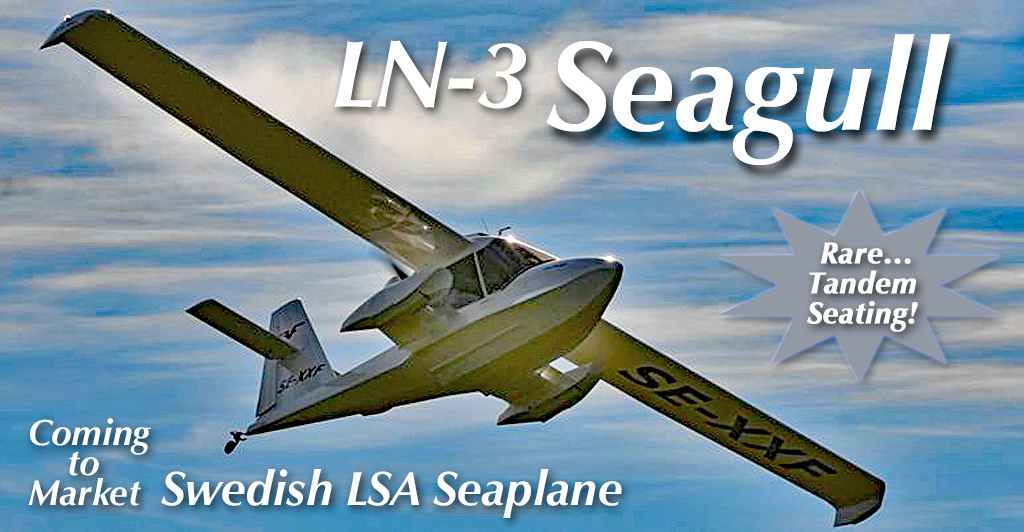
LSA seaplanes are a segment all to themselves. [See Breaking News at bottom!] It isn’t only that seaplanes can offer “triphibian” capabilities (a term once promoted by MVP) because they can operate from land, water, or snow. That makes them versatile but amphibious craft must incorporate retractable gear and since they require a sturdy hydrodynamic boat hull as well as aerodynamic aircraft structures, the engineering task becomes significantly larger than land plane designs. Icon took years with their A5 and Vickers is still working on their Wave. Both took more than a decade to reach market. Several other LSA seaplane projects required similarly lengthy development. Now from Svenska Flygfabriken (Swedish Aviation Factory) comes LN-3. This new entry is distinctive because it is a tandem-seating seaplane. Yes, I know lots of Cub-types on floats are tandem but among boat-hulled seaplanes, I’m not aware of any others like this.


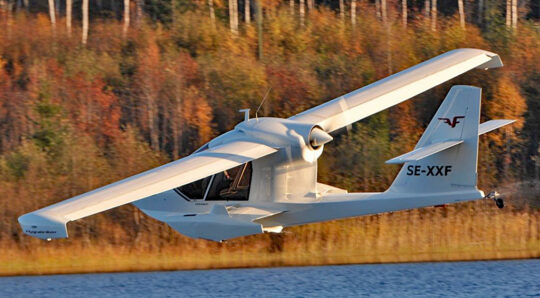 It isn't only that seaplanes can offer "triphibian" capabilities (a term once promoted by
It isn't only that seaplanes can offer "triphibian" capabilities (a term once promoted by 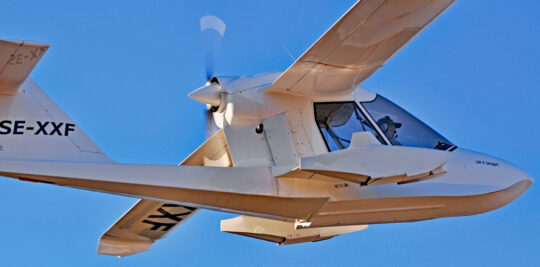 Now from
Now from 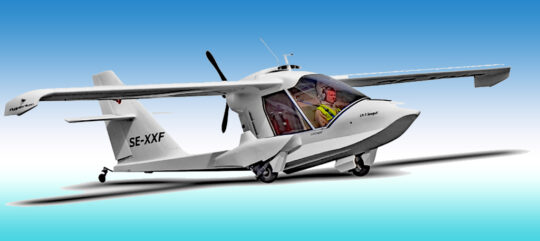 "In 2007 we displayed the airplane with a rollout in the local concert hall, Tonhallen in Sundsvall," he continued. "We flew for the first time in 2008." He observed that they are still flying that same aircraft and the team believes they have this well sorted out and are ready for market.
In an earlier iteration, Seagull used a strutted wing with titanium landing gear powered by a Jabiru 2200 engine that output 81 horsepower. "Since then the design has evolved," Staffan said, "and today LN-3 Seagull has a cantilevered wing that is easily removed." Carbon fiber is used in most of the construction including the landing gear. The engine selections now feature Rotax or D-Motor.
"In 2007 we displayed the airplane with a rollout in the local concert hall, Tonhallen in Sundsvall," he continued. "We flew for the first time in 2008." He observed that they are still flying that same aircraft and the team believes they have this well sorted out and are ready for market.
In an earlier iteration, Seagull used a strutted wing with titanium landing gear powered by a Jabiru 2200 engine that output 81 horsepower. "Since then the design has evolved," Staffan said, "and today LN-3 Seagull has a cantilevered wing that is easily removed." Carbon fiber is used in most of the construction including the landing gear. The engine selections now feature Rotax or D-Motor.
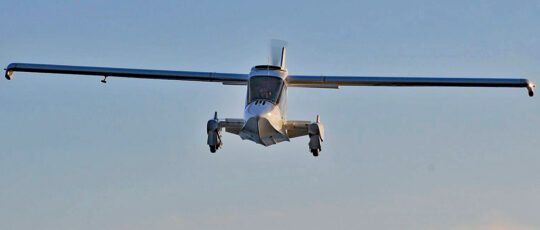 "We made a lot of modifications and have flown with three different engines," related Staffan. "Early in the process we replaced the strutted wing with a cantilever wing to offer easy mounting and dismounting of the wings. We made a trailer for ease of moving the airplane to and from the airfield."
Power has increased from the four cylinder Jabiru. "We have flown with the Rotax 914 Turbo plus a four-cylinder D-motor. We are currently using the
"We made a lot of modifications and have flown with three different engines," related Staffan. "Early in the process we replaced the strutted wing with a cantilever wing to offer easy mounting and dismounting of the wings. We made a trailer for ease of moving the airplane to and from the airfield."
Power has increased from the four cylinder Jabiru. "We have flown with the Rotax 914 Turbo plus a four-cylinder D-motor. We are currently using the 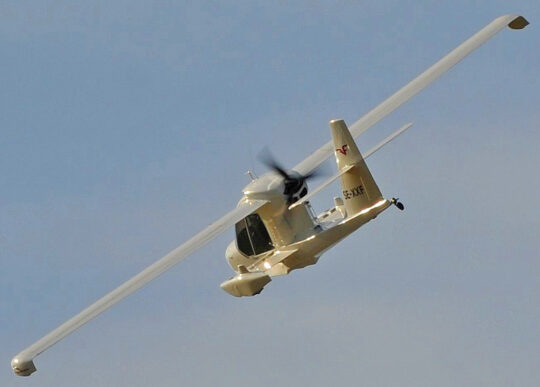 "All modifications were made to the original aircraft… [but we have now] finalized the design of the production airplane in 3D-CAD environment," Staffan clarified. We have made most of the molds (image) and will start producing kit airplanes in summer 2024. This start of production is a great milestone for us and, of course, is very exciting!"
After many flying hours have been logged, Staffan is clearly ready to get LN-3 Seagull on the market. "It's a nice flying airplane with very good performance and a totally unobstructed, hard-to-beat view from the cockpit," boasted Staffan.
"All modifications were made to the original aircraft… [but we have now] finalized the design of the production airplane in 3D-CAD environment," Staffan clarified. We have made most of the molds (image) and will start producing kit airplanes in summer 2024. This start of production is a great milestone for us and, of course, is very exciting!"
After many flying hours have been logged, Staffan is clearly ready to get LN-3 Seagull on the market. "It's a nice flying airplane with very good performance and a totally unobstructed, hard-to-beat view from the cockpit," boasted Staffan.
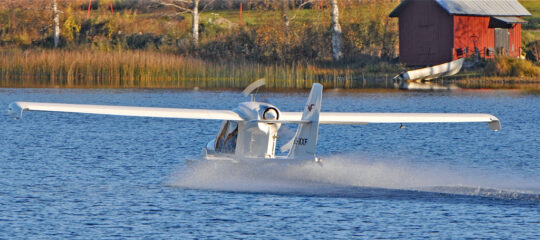 The airplane is equipped with conventional ailerons controlled with the stick via push-pull rods. The flap is of slotted type with a maximum extension of 45 degrees. A horizontal stabilizer and the elevator are controlled with the stick via push-pull rods. The rudder is controlled with pedals via cables and it extends to become a water rudder controlled with the pedals. Hinges on all control surfaces are of ball bearing type and the elevator is fully balanced.
LN-3 Seagull landing gear is composed of retractable main gear and a steerable tail wheel. The main gear legs are built of carbon fiber and euipped with a oleomatic spring/damper. Retractable gear are actuated mechanically with a lever in the cockpit.
The airplane is equipped with conventional ailerons controlled with the stick via push-pull rods. The flap is of slotted type with a maximum extension of 45 degrees. A horizontal stabilizer and the elevator are controlled with the stick via push-pull rods. The rudder is controlled with pedals via cables and it extends to become a water rudder controlled with the pedals. Hinges on all control surfaces are of ball bearing type and the elevator is fully balanced.
LN-3 Seagull landing gear is composed of retractable main gear and a steerable tail wheel. The main gear legs are built of carbon fiber and euipped with a oleomatic spring/damper. Retractable gear are actuated mechanically with a lever in the cockpit.
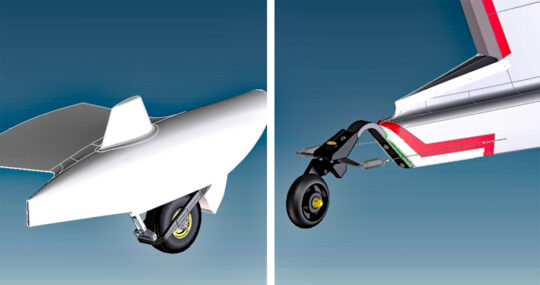 The fuselage consists of a hull built from aramid fibre and the rest of the fuselage is carbon fiber. Fuselage panels are of sandwich construction and behind the aft seat a main bulkhead with a metal truss distribute the loads from the fuselage to the wings. The cockpit floor is constructed to permit the hull to flex somewhat when landing on water.
LN-3's structure is robust as the manufacturer said, "The design is made in compliance with FAR 23 aerobatic category thus making the LN-3 permitted for aerobatic flying."
The fuselage consists of a hull built from aramid fibre and the rest of the fuselage is carbon fiber. Fuselage panels are of sandwich construction and behind the aft seat a main bulkhead with a metal truss distribute the loads from the fuselage to the wings. The cockpit floor is constructed to permit the hull to flex somewhat when landing on water.
LN-3's structure is robust as the manufacturer said, "The design is made in compliance with FAR 23 aerobatic category thus making the LN-3 permitted for aerobatic flying."
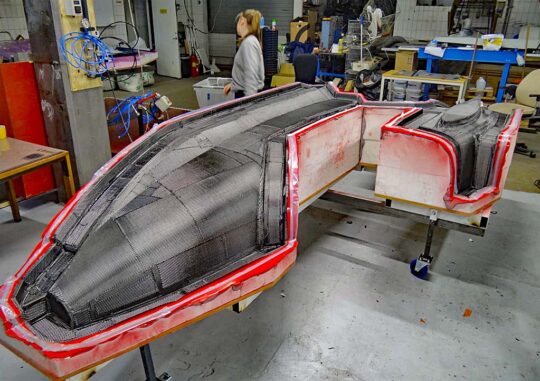 The fuel tank is placed in the fuselage and the filler neck is positioned under a lid on the left side. "This is an advantage compared to having wing tanks, especially when taxiing on water," noted Staffan. "The engine will have good fuel supply without the pilot having to monitor which tank is chosen."
"We have now opened our order book for LN-3 Seagull kits" said Staffan with clear excitement. "We are also looking for partners to present and sell the airplane outside of Sweden."
The fuel tank is placed in the fuselage and the filler neck is positioned under a lid on the left side. "This is an advantage compared to having wing tanks, especially when taxiing on water," noted Staffan. "The engine will have good fuel supply without the pilot having to monitor which tank is chosen."
"We have now opened our order book for LN-3 Seagull kits" said Staffan with clear excitement. "We are also looking for partners to present and sell the airplane outside of Sweden."
 This company video shows takeoff from land, gear retract, landing on water, and paddling to shore.
https://vimeo.com/201269703
This company video shows takeoff from land, gear retract, landing on water, and paddling to shore.
https://vimeo.com/201269703
